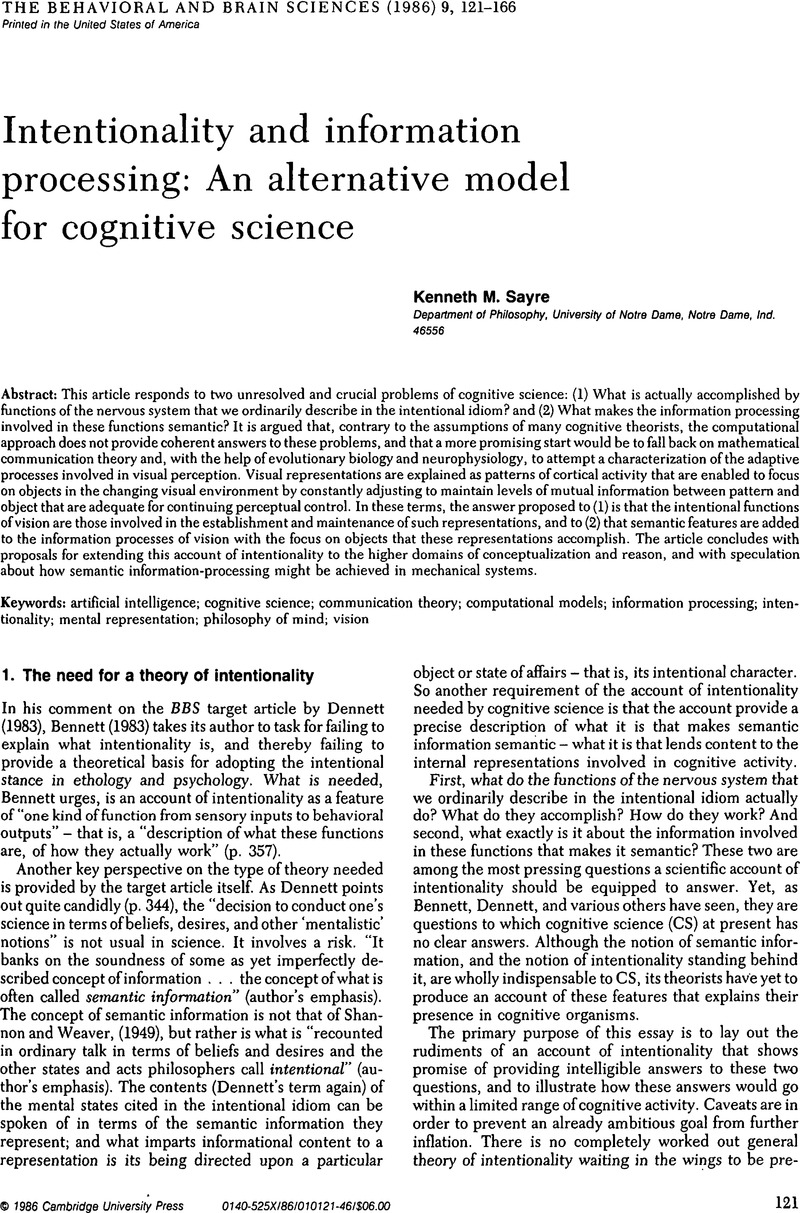Crossref Citations
This article has been cited by the following publications. This list is generated based on data provided by Crossref.
Puccetti, Roland
1987.
Intentionality in the visual cortex?.
Behavioral and Brain Sciences,
Vol. 10,
Issue. 04,
p.
758.
Bourbon, W. Tom
1987.
A case of different intentions concerning intentionality.
Behavioral and Brain Sciences,
Vol. 10,
Issue. 04,
p.
755.
Gulick, Robert Van
1987.
Information and the holism of intentional content.
Behavioral and Brain Sciences,
Vol. 10,
Issue. 04,
p.
759.
Pfeifer, Karl
1987.
Causal dispositions + sensory experience = intentionality.
Behavioral and Brain Sciences,
Vol. 10,
Issue. 04,
p.
757.
Fields, Chris
and
Dietrich, Eric
1987.
Intentionality is a red herring.
Behavioral and Brain Sciences,
Vol. 10,
Issue. 04,
p.
756.
Sayre, Kenneth M.
1987.
Various senses of “intentional system”.
Behavioral and Brain Sciences,
Vol. 10,
Issue. 04,
p.
760.
Perlis, Don
1990.
Knowledge Representation and Defeasible Reasoning.
Vol. 5,
Issue. ,
p.
99.



